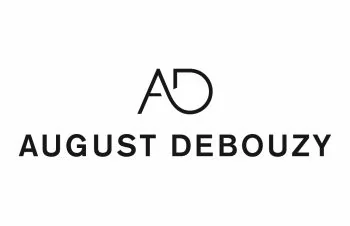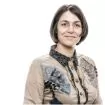France refers a question to the CJEU on article 3d) of Regulation 469/2009 and Neurim's interpretation:
- Where does the limit of the "new application" need to be placed: veterinary versus human MA, new medical indication, new mode of action of the active ingredient, new dosage, new mode of administration, new formulation?
- Should the criteria be stricter than the one of patentability?
- Should the scope of the basic patent correspond with the one of the MA?
Article 3d) of Regulation 469/2009 states that a SPC may only be granted if the MA on which it is based is "the first authorization to place the product on the market as a medicinal product".
The rule seemed clear: if the active ingredient has already been authorized on the market, the same active ingredient will no longer be able to obtain a SPC, even for a new therapeutic indication. In 2012, the Neurim1 judgment interpreted article 3d) differently: another SPC may be granted for a different "application" from the first MA when the patent on which the SPC is based protects this new application. In Neurim, the first MA was a veterinary MA, and the second was a human MA; the reasoning of the CJEU seemed to clearly indicate that the judgment would have been the same with two human MA2.
Following this decision, the national patent offices had to decide on Neurim's scope. The French PTO mentions that the Dutch PTO strictly limited its application to the case underlying Neurim (human MA versus veterinary MA), whereas the British judge went as far as questioning the necessity to encompass new formulations of know products. The French PTO intends to apply Neurim in a balanced way, but questions where to draw the line for article 3d) and Neurim: may a new therapeutic indication, the treatment of a new species (veterinary MA versus human MA), a new mode of action of a known active ingredient, a new mode of administration, a new dosage, a new formulation, allow the right to have a SPC ? This is the purpose of the question referred to the CJEU. The Paris Court of Appeal also asks for clarification on the requirement degree: should it be more stringent than those applied to patentability? At last, should the scope of the patent on which the SPC is based correspond with the one of the MA?
These questions are close to those of Mr Arnold J who also asked the CJEU in January 2017 to clarify how article 3d) should be interpreted (Abraxis3).
The Paris Court of Appeals decided4, after having obtained the opinion of the French Patent Office, to refer the following decision to the CJEU:
1- should the notion of different application under the NEURIM decision of 19 July 2012 CJEU, C-130/11, be strictly understood, that is to say:
- be limited to the sole case of a human application following a veterinary application,
- or concern an indication falling under a new therapeutic field, in the sense of a new medical specialty, in relation to the previous marketing authorization, or a medicinal product in which the active ingredient has a different mode of action action from that which it exercises in the medicinal product having been the subject of the first marketing authorization;
- or more generally, with regard to the objectives of Regulation (EC) No 469/2009 establishing a balanced system taking into account all the interests at stake, including those of public health, be assessed according to more demanding criteria than those governing the assessment of the patentability of the invention;
or, on the contrary, should it be understood extensively, that is to say, including not only therapeutic indications and different diseases, but also different formulations, dosages and/or modes of administration.
2- does the notion of application within the limits of the protection conferred by the basic patent under the NEURIM decision of 19 July 2012 CJEU, C-130/11, imply that the scope of the basic patent should correspond with the one of the marketing authorization invoked and, consequently, be limited to the new medicinal use corresponding to the therapeutic indication of the said marketing authorization.
The facts giving rise to this referral are the following:
- Cyclosporine was known, as an oral solution, (medicinal product Sandimmum®) for
- prevention of rejection of solid organ transplants or of bone marrow
- treatment of uveitis (inflammation of the uvea: treatment of the central part of the eyeball)
- the new indication for which a SPC was requested was the treatment of severe keratitis (inflammation of the cornea, anterior part of the eyeball), as emulsion eye drops (medicinal product Ikervis®)
- posology and dosage of the two medicinal products differ.
The reasons for the refusal to grant of the SPC are as follows: it has not been demonstrated that the medicinal application of the MA of Ikervis constitutes a new therapeutic application, under the Neurim judgment, compared to Sandimmun, as they both relate to the treatment of inflammation in the ophthalmological field. In addition, both MA relate to the treatment of inflammation of parts of the human eye, by the same mechanism of action of cyclosporine: a new medicinal use would have not be sufficiently demonstrated.
The French PTO also mentions that in the present case, the scope of the basic patent does not correspond to the MA one, whereas it was the case in Neurim. The basic patents covers the product (ophthalmic emulsion comprising cyclosporine), but also multiple ocular indications including keratitis as well as uveitis.
Footnote
1 C130/11
2 C130/11: paragraphs 25, 26 and 30
3 C 443/13: question referred to in Abraxis Bioscience LLC v The Comptroller General of Patents, High Court of England and Wales, (Arnold J), London, UK, 13 January 2017, Neutral Citation Number: 2017 EWHC 14 (Pat)
4 Paris Court of Appeals, 9 October 2018, RG 17/19934, Santen
The content of this article is intended to provide a general guide to the subject matter. Specialist advice should be sought about your specific circumstances.



